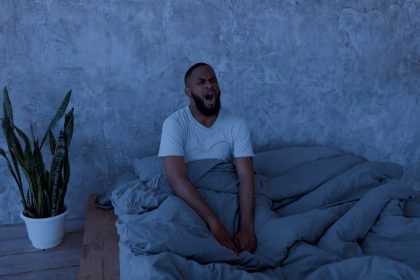As the first rays of morning sun filter through your window, they deliver much more than mere illumination. This daily light signal initiates a remarkable sequence of biological events that influences everything from your immediate mood to your sleep quality hours later. Yet in our increasingly indoor lives, many of us miss this essential natural cue, unwittingly disrupting systems that evolved over millennia to respond to the sun’s reliable rhythm.
Recent advances in chronobiology, the study of how our bodies respond to light and time, have revealed just how profoundly morning light exposure shapes mental wellbeing. Far from being a vague wellness recommendation, specific timing and duration of light exposure creates measurable biological changes with significant implications for mood, focus, energy, and resilience.
The biology behind light’s mood-boosting power
Morning sunlight affects us through multiple pathways, each contributing to different aspects of mental and physical wellbeing. The primary mechanisms involve direct influence on the brain’s master clock, hormone production, neurotransmitter regulation, and energy metabolism.
When morning light enters the eyes, specialized photoreceptors containing melanopsin, different from those used for vision, transmit signals directly to the suprachiasmatic nucleus (SCN), the brain’s timekeeper located in the hypothalamus. This region orchestrates countless biological rhythms, synchronizing them with the external day-night cycle.
This light-induced reset triggers a cascade of downstream effects that collectively enhance mood and energy. Understanding these mechanisms helps explain why morning light exposure proves so powerful for mental health, it works through fundamental biological systems rather than subjective psychological effects alone.
Resets your internal clock for better sleep timing
The most immediate impact of morning light exposure involves recalibrating your circadian rhythm, the approximately 24-hour cycle that governs sleep-wake patterns and numerous physiological processes.
Morning light essentially anchors this internal clock to the external world, preventing the natural drift toward later sleep and wake times that would otherwise occur. Without this daily reset, most people’s internal clocks would gradually shift later by about 15-30 minutes each day, creating misalignment with social schedules and daylight hours.
This anchoring effect proves particularly valuable during darker winter months or for those who spend most daylight hours indoors. Just 15-30 minutes of morning light exposure can shift sleep timing earlier by approximately 30 minutes for most people, making both falling asleep and waking easier.
For those struggling with delayed sleep phase, a common pattern where falling asleep and waking come significantly later than desired, consistent morning light exposure often yields more substantial improvements than sleep medications, without side effects or dependency issues.
Boosts serotonin production for improved mood
Morning sunlight stimulates the brain’s production of serotonin, a neurotransmitter intricately linked with mood regulation, emotional stability, and feelings of satisfaction and calm. This boost occurs through both direct neurological pathways and through vitamin D synthesis triggered by sunlight on skin.
Unlike pharmaceutical approaches that prevent serotonin breakdown or reuptake, natural light exposure actually increases serotonin production itself. This helps explain why regular morning light exposure correlates with approximately 30% lower risk of developing depression across population studies.
The serotonin-boosting effect appears most potent in the morning hours, with diminishing returns later in the day. This timing advantage stems from both the circadian sensitivity of the brain regions involved and the specific wavelength composition of morning light, which contains a higher proportion of blue light compared to afternoon or evening sunlight.
Morning light’s mood benefits accumulate over time, with consistent exposure creating more stable serotonin regulation rather than just temporary improvements. This cumulative effect helps explain why light therapy shows increasing benefits over the first few weeks of regular use.
Regulates cortisol patterns for steady energy
Morning sunlight helps establish healthy cortisol rhythms, the stress hormone that ideally peaks in early morning to promote wakefulness and gradually declines throughout the day. Without proper morning light exposure, this crucial rhythm often flattens or becomes erratic.
The properly timed cortisol peak, stimulated by morning light, provides natural energy without the jittery effects of caffeine. This explains why adequate morning light often reduces reliance on caffeine while simultaneously improving subjective energy levels throughout the day.
Beyond immediate energy benefits, regulated cortisol patterns improve stress resilience more broadly. When cortisol follows its natural daily rhythm, the body responds more appropriately to stressors and recovers more quickly afterward. Those with disrupted cortisol patterns, in contrast, often experience exaggerated stress responses and impaired recovery.
For those experiencing afternoon energy crashes, morning light exposure often proves more effective than dietary changes alone. The improved cortisol rhythm helps maintain steady energy through the typical mid-afternoon dip when many resort to caffeine or sugar.
Enhances melatonin production for deeper sleep
Counterintuitively, morning sunlight exposure significantly improves the production of melatonin, the sleep-promoting hormone, approximately 14-16 hours later. This seemingly paradoxical relationship highlights the interconnected nature of the body’s circadian system.
The SCN, when properly reset by morning light, signals for stronger melatonin production in the evening. Without this morning reset, melatonin production often begins too late and reaches insufficient levels, contributing to difficulty falling asleep and maintaining deep sleep stages.
Properly timed melatonin production improves both sleep onset and sleep architecture, the structural organization of sleep stages throughout the night. Those receiving adequate morning light typically experience 15-20% more slow-wave sleep, the deepest and most restorative sleep stage.
The melatonin-enhancing effects of morning light appear particularly valuable during seasonal transitions and for shift workers whose schedules disrupt normal light exposure patterns. In these contexts, intentional morning light exposure helps prevent the sleep disruptions that often accompany changing light conditions.
Reduces inflammation markers linked to mood disorders
Morning sunlight exposure reduces key inflammatory markers throughout the body, creating another pathway through which light influences mood and mental health. This anti-inflammatory effect occurs through both vitamin D-dependent and independent mechanisms.
Inflammatory markers like interleukin-6 and C-reactive protein, both associated with depression and anxiety when chronically elevated, decrease measurably with regular morning light exposure. This reduction helps explain the mood benefits that often extend beyond what neurotransmitter changes alone would predict.
The anti-inflammatory impact appears most pronounced when morning light exposure includes some skin exposure rather than just ocular light. However, even light through windows provides meaningful effects, particularly for the neurologically-mediated anti-inflammatory pathways.
For those with seasonal mood changes, the anti-inflammatory benefits of morning light may help counteract the increased inflammation that commonly occurs during winter months due to both reduced light exposure and increased viral infections.
Sharpens cognitive function and attention
Morning light exposure enhances cognitive performance through multiple mechanisms. The direct alerting effects improve attention and working memory, while the circadian regulation supports more consistent cognitive function throughout the day.
Executive functions, including decision-making, planning, and impulse control, show particular sensitivity to light exposure. Morning light improves performance on complex cognitive tasks by approximately 10-25% compared to similar tasks performed without adequate light exposure.
The cognitive benefits extend beyond immediate effects, with regular morning light exposure creating more stable daily patterns of attention and focus. This stability proves particularly valuable for those with attention difficulties or cognitive fluctuations throughout the day.
For students and knowledge workers, morning light exposure often translates to more consistent academic or work performance. The improved attention regulation helps maintain focus during challenging mental tasks while reducing the cognitive costs of shifting between different types of work.
Increases physical activity motivation
Morning light exposure significantly increases the likelihood of engaging in physical activity, creating an indirect but powerful pathway to improved mood. This motivation boost stems from both improved energy levels and direct effects on brain regions governing initiative and goal-directed behavior.
Those receiving adequate morning light report approximately 20% higher subjective energy for physical activity and demonstrate increased spontaneous movement throughout the day. This increased activity further enhances mood through well-established exercise-related mechanisms.
The activity-promoting effects appear strongest when morning light exposure occurs outdoors rather than through windows. The combination of natural light, fresh air, and brief contact with natural environments creates synergistic benefits for both motivation and mood.
For those struggling with exercise consistency, morning light exposure often proves more effective than willpower-based approaches. The biological support for activity makes movement feel more natural and less effortful, addressing the fundamental energy and motivation barriers that often undermine exercise intentions.
Practical implementation for maximum benefit
Translating these insights into daily practice involves several key considerations:
Timing for optimal effect
Morning light exposure proves most effective when received within the first hour after waking. This timing aligns with the peak sensitivity of the circadian system to light input and maximizes the downstream benefits throughout the day.
Secondary benefits occur with light exposure throughout the morning hours, though with gradually diminishing returns. Even midday light provides value, particularly during winter months when total light exposure often falls below optimal levels.
Duration and intensity considerations
Light intensity significantly influences effectiveness. Outdoor morning light, even on cloudy days, provides 10,000-25,000 lux (a measure of light intensity), far surpassing typical indoor lighting at 300-500 lux or the 10,000 lux standard used in light therapy devices.
Duration requirements vary inversely with intensity. While 20-30 minutes of outdoor morning light suffices for most circadian benefits, longer durations provide additional mood enhancement through vitamin D production and extended serotonin stimulation.
For those using light therapy devices as alternatives during inclement weather or dark winter mornings, 30-45 minutes at 10,000 lux, positioned approximately 16-24 inches from the face but not staring directly at the light, provides comparable benefits to shorter natural light exposure.
Seasonal adjustments
As daylight hours and sun angle change throughout the year, adaptive strategies maintain consistent benefits. During winter months, taking morning breaks outdoors becomes increasingly valuable, even if requiring schedule adjustments to accommodate limited daylight.
For those in northern latitudes with minimal winter daylight, combining abbreviated outdoor exposure with light therapy devices offers a practical solution. This combined approach addresses both the reduced light intensity and shortened daylight hours characteristic of winter at high latitudes.
Overcoming common obstacles
Several practical challenges often prevent consistent morning light exposure:
Modern work schedules frequently begin before adequate light exposure occurs, particularly during winter months. Potential solutions include brief outdoor time before commuting, positioning desks near windows, and using light therapy devices at the workplace during early hours.
Weather limitations discourage outdoor morning time during inclement conditions. Creating covered outdoor spaces, using appropriate clothing for brief exposure despite weather, or substituting light therapy during the worst weather days helps maintain consistency.
Screen use immediately upon waking often delays intentional light exposure. Establishing a morning sequence that prioritizes light before or during early morning activities, rather than immediately engaging with devices, preserves the opportunity for proper circadian entrainment.
By recognizing morning light not as a lifestyle luxury but as a biological necessity, we can prioritize this simple yet powerful intervention. The cumulative effects of consistent morning light exposure create profound improvements in mood, energy, and overall mental wellbeing, benefits available to anyone willing to turn toward the light each morning.















